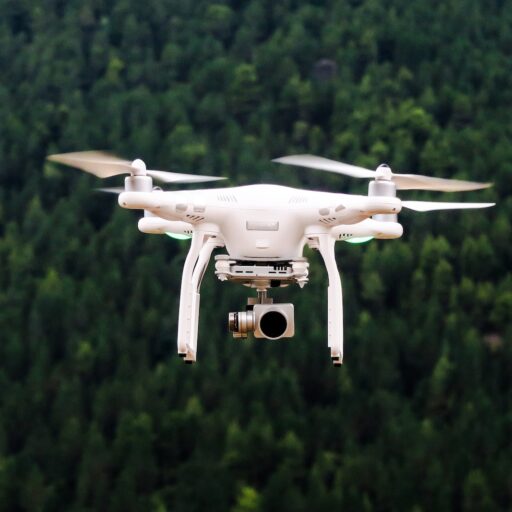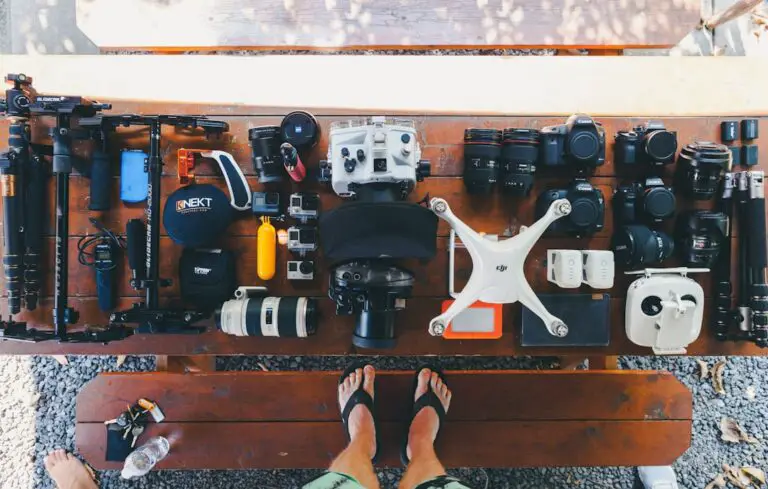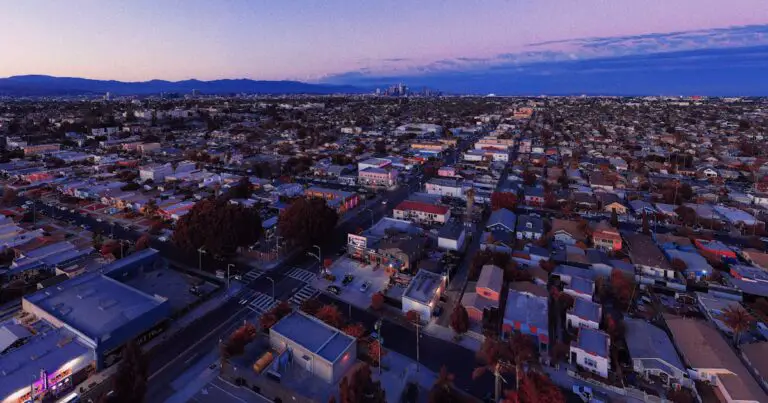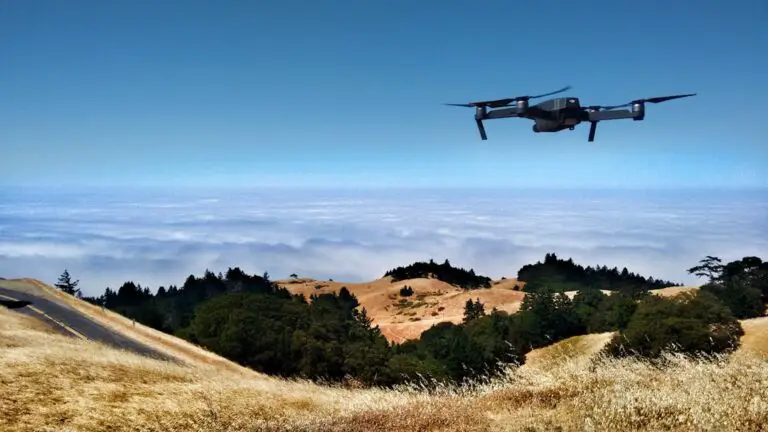Support our educational content for free when you purchase through links on our site. Learn more
What Percentage of Drones Are Used for Recreation vs. Commercial in 2025? 🚁
Ever wondered how many drones buzzing in the sky are just hobbyists chasing sunsets versus professionals transforming industries? Spoiler alert: while recreational drones outnumber commercial ones by a wide margin, the commercial sector is soaring in value and innovation faster than you might expect. At Drone Brands™, we’ve crunched the numbers, shared insider stories, and explored how regulations, technology, and market trends shape this fascinating split. Stick around—later, we’ll reveal surprising regional differences and expert tips on choosing the perfect drone for your flying ambitions!
Key Takeaways
- Recreational drones make up the majority of registered drones, with millions of hobbyists worldwide enjoying aerial photography, FPV racing, and pure fun.
- Commercial drones, though fewer in number, dominate economic impact, powering industries like agriculture, construction, and public safety with advanced tech and certified pilots.
- Regulations differ sharply: recreational flyers follow simpler rules, while commercial operators must obtain FAA Part 107 certification and adhere to stricter guidelines.
- Technological advances are blurring lines, with prosumer drones offering features once exclusive to enterprise models.
- Future growth is explosive for commercial drones, especially with autonomous flights and urban air mobility on the horizon.
Ready to find your perfect drone? Check out our top picks for recreational drones and commercial drones to get started!
Table of Contents
- ⚡️ Quick Tips and Facts About Drone Usage Percentages
- 🛸 The Evolution of Drone Use: From Hobbyist Toys to Commercial Powerhouses
- 📊 What Percentage of Drones Are Used for Recreational vs. Commercial Purposes?
- 🚁 Key Factors Influencing Drone Usage Distribution
- 🛡️ Legal and Regulatory Impact on Recreational vs. Commercial Drone Use
- 💡 How Technology Advances Are Shaping Recreational and Commercial Drone Markets
- 📈 Market Forecast: Future Trends in Drone Usage Percentages
- 🎯 Choosing the Right Drone: Tips for Recreational and Commercial Pilots
- 🤔 Common Misconceptions About Drone Usage and Ownership
- 🛠️ Maintenance and Safety Tips for Recreational and Commercial Drone Operators
- 🚀 Success Stories: How Commercial Drones Are Changing Industries
- 📚 Recommended Links for Further Reading on Drone Usage Statistics
- ❓ FAQ: Your Burning Questions About Recreational vs. Commercial Drone Use Answered
- 🔗 Reference Links and Data Sources
- 🏁 Conclusion: What the Numbers Tell Us About the Drone Sky Ahead
Here is the main body content for your blog post, crafted by the expert team at Drone Brands™.
Body
⚡️ Quick Tips and Facts About Drone Usage Percentages
Welcome, fellow aviators and curious minds! Before we dive deep into the wild blue yonder of drone statistics, let’s get you up to speed with some quick, bite-sized facts. Think of this as your pre-flight checklist for knowledge. Here at Drone Brands™, we’ve seen it all, and the numbers tell a fascinating story. For a complete breakdown, you can always check our comprehensive guide to drone statistics.
- Recreational Dominance by Numbers: The vast majority of drones registered are for recreational purposes. The Federal Aviation Administration (FAA) reports hundreds of thousands more registered recreational drones than commercial ones. It’s a hobbyist’s world, by sheer volume!
- Commercial Value Soars: While hobbyists own the numbers game, the commercial drone market owns the value game. The global commercial drone market size is projected to reach tens of billions of dollars, with a staggering compound annual growth rate (CAGR).
- The 0.55 lbs Rule: Any drone weighing 0.55 pounds (250 grams) or more must be registered with the FAA, whether you’re flying for fun or for profit. This is a critical piece of drone law and regulation you can’t ignore.
- Top Commercial Industries: The top sectors leveraging drones for business are construction, agriculture, and insurance. From surveying building sites to assessing crop health, drones are the new workhorses.
- DJI’s Market Hold: Chinese manufacturer DJI continues to dominate the global drone market, holding a massive share in both the consumer and enterprise segments. They’re the 800-pound gorilla in the drone sky.
- The Part 107 Certificate: To fly a drone commercially in the U.S., you need an FAA Remote Pilot Certificate, also known as a Part 107 license. Over 300,000 of these certificates have been issued, showing a serious commitment to professional drone operations.
🛸 The Evolution of Drone Use: From Hobbyist Toys to Commercial Powerhouses
Remember when drones were just those buzzy, hard-to-control toys you’d see crashing in a park? We do! It feels like just yesterday we were trying to keep a rickety quadcopter airborne for more than three minutes. Oh, how times have changed!
The journey of the unmanned aerial vehicle (UAV) is a classic tale of technology trickling down. What started as sophisticated, expensive military hardware has morphed into something accessible to everyone.
In the early 2010s, brands like Parrot with their AR.Drone captured the public’s imagination. Suddenly, you could pilot a flying machine with your smartphone! It was revolutionary, albeit a bit clumsy. Then, DJI entered the scene and changed everything. With the release of the Phantom series, they introduced GPS stability, high-quality cameras, and user-friendly controls. This was the spark that ignited the recreational drone fire.
But as hobbyists were capturing stunning vacation videos, businesses started to take notice. “Wait a minute,” they thought, “if you can get a beautiful shot of a beach, couldn’t we get a detailed view of a roof for an insurance claim?” And just like that, the commercial drone revolution began. The same technology that made flying fun for everyone also made it incredibly useful for professionals, paving the way for a whole new world of drone business opportunities.
📊 What Percentage of Drones Are Used for Recreational vs. Commercial Purposes?
So, let’s get to the heart of the matter. You’re sitting in a park, you see a drone zip by, and you wonder: is that person just having fun, or are they working? It’s the million-dollar question, and the answer is a bit more nuanced than you might think.
The simple answer is that recreational drones outnumber commercial drones by a significant margin. However, the impact and economic value are shifting dramatically towards the commercial sector.
1. Recreational Drone Usage: Who’s Flying and Why?
These are the weekend warriors, the vacation documentarians, the FPV (First-Person View) racers, and the casual flyers. They are the lifeblood of the consumer drone market.
- The Numbers: According to the latest FAA data, there are over 800,000 registered recreational drones in the United States. And that doesn’t even count the sub-250g drones like the DJI Mini 4 Pro, which don’t require registration for hobby use. The real number of hobby drones in the wild is likely well into the millions.
- The Motivation: It’s all about passion!
- Aerial Photography & Videography: Capturing breathtaking landscapes, family events, and unique perspectives.
- FPV Racing & Freestyle: A high-octane sport that combines the thrill of racing with the immersion of piloting from the drone’s point of view.
- Pure Fun: Simply enjoying the experience of flight. It’s a modern-day kite, but way, way cooler.
One of our pilots, Dave, started with a simple Ryze Tello drone, just to chase his dog around the backyard (the dog loved it, by the way). A few years later, he’s capturing cinematic footage of mountain ranges with a high-end consumer drone. That’s the typical journey for a hobbyist.
2. Commercial Drone Applications: Industries Taking Flight
This is where drones go from being a fun gadget to a transformative tool. Commercial pilots are certified professionals performing specific tasks.
- The Numbers: The FAA reports nearly 600,000 commercial drones have been registered. While this is less than the recreational number, it’s growing at a much faster pace. More importantly, there are over 350,000 certified remote pilots ready to fly them.
- The Motivation: ROI, baby! Efficiency, safety, and data.
- Construction & Real Estate: Site mapping, progress monitoring, and creating stunning property showcases.
- Agriculture: Precision spraying, crop health analysis, and livestock monitoring.
- Public Safety: Search and rescue, accident scene reconstruction, and fire monitoring.
- Inspections: Assessing infrastructure like bridges, power lines, and wind turbines without putting a human in danger.
We once got a call from a farmer who was losing a significant portion of his crops to an unknown issue. Using a drone equipped with a multispectral sensor, we were able to identify an irrigation problem in a matter of hours—a task that would have taken days of walking the fields. That’s the power of commercial drones.
3. Regional Variations in Drone Usage: Global Trends and Insights
The recreational vs. commercial split isn’t uniform across the globe. Different regulations and economic focuses create different landscapes.
- North America: Strong in both recreational and commercial sectors, with the FAA providing a clear (if complex) framework for both.
- Europe: The European Union Aviation Safety Agency (EASA) has unified regulations across member states, which is helping to accelerate commercial adoption.
- Asia-Pacific: A manufacturing hub (hello, DJI!) and a hotbed for commercial innovation, particularly in agriculture and delivery logistics.
🚁 Key Factors Influencing Drone Usage Distribution
So why the big difference in numbers? And why is the commercial side growing so fast? It boils down to a few key ingredients.
| Factor | Impact on Recreational Use | Impact on Commercial Use |
|---|---|---|
| Cost of Entry | ✅ Lower: You can get a great beginner drone for a few hundred dollars. | ❌ Higher: Enterprise drones with specialized sensors (LiDAR, thermal) can cost tens of thousands. |
| Regulations | ✅ Simpler: Fly for fun, follow basic safety rules, register if >250g. | ❌ More Complex: Requires a Part 107 certificate, adherence to stricter operational rules, potential waivers for special flights. |
| Technological Need | ✅ Basic: A good camera and stable flight are usually enough. | ❌ Advanced: Requires high-precision GPS (RTK/PPK), specialized sensors, and robust data processing software. |
| Return on Investment (ROI) | ❌ Emotional: The return is joy, great photos, and fun. | ✅ Financial: The return is money saved, increased efficiency, and improved safety. |
The low barrier to entry for recreational flying means more people can participate. However, the compelling ROI for businesses is driving massive investment and rapid growth in the commercial sector.
🛡️ Legal and Regulatory Impact on Recreational vs. Commercial Drone Use
Navigating the legal sky is just as important as navigating the actual sky. The rules you need to follow depend entirely on why you’re flying. This is a topic we cover extensively in our Drone Laws and Regulations section.
As the legal experts at SWL Attorneys note, “The FAA has different rules for recreational and commercial drone use.” This distinction is the most critical line in the sand.
Recreational Flyers (The Fun-Seekers)
If you’re flying purely for personal enjoyment, you fall under the Recreational Flyer rules (49 U.S.C. 44809).
- ✅ Do: Take The Recreational UAS Safety Test (TRUST) and carry proof of passage.
- ✅ Do: Register your drone if it weighs 0.55 lbs or more.
- ✅ Do: Fly only for recreational purposes.
- ❌ Don’t: Fly above 400 feet in controlled airspace without authorization.
- ❌ Don’t: Fly in a way that interferes with emergency response activities.
Commercial Operators (The Professionals)
If your flight is in any way furthering a business, you’re commercial. This includes everything from selling photos to using a drone to inspect your own business’s roof. You must follow the Part 107 rules.
- ✅ Do: Obtain a Remote Pilot Certificate (Part 107 license) from the FAA.
- ✅ Do: Register your drone as a commercial UAS.
- ✅ Do: Conduct pre-flight checks and maintain your aircraft.
- ❌ Don’t: Fly over people or moving vehicles unless your drone and operation meet specific requirements.
- ❌ Don’t: Operate from a moving vehicle.
The legal firm SWL Attorneys puts it clearly: “Commercial operators have more flexibility but also face more stringent requirements, such as the need for a Remote Pilot Certificate and adherence to specific operational rules.” This extra hurdle is a major reason why there are fewer commercial pilots, but it also ensures a higher standard of safety and professionalism.
💡 How Technology Advances Are Shaping Recreational and Commercial Drone Markets
Technology is the wind beneath the drone industry’s wings. Every year, drones get smarter, safer, and more capable, which benefits everyone.
- For the Hobbyist: Advancements mean longer flight times, better cameras, and incredible ease of use. A few years ago, features like obstacle avoidance and “follow me” mode were high-end. Now, they’re standard on many consumer models like the Autel EVO Lite+. This makes flying safer and more fun for everyone.
- For the Professional: The tech boom is even more pronounced here.
- RTK/PPK: Real-Time Kinematic and Post-Processed Kinematic GPS provide centimeter-level accuracy, which is a game-changer for surveying and mapping.
- LiDAR: Light Detection and Ranging sensors can create incredibly detailed 3D models of terrain and structures.
- AI and Machine Learning: Drones can now be trained to automatically identify things like damaged solar panels, specific types of vegetation, or cracks in a bridge.
These advancements are blurring the lines. A high-end “prosumer” drone like the DJI Mavic 3 Pro has features that were exclusive to enterprise drones just a couple of years ago, making it a favorite for both serious hobbyists and professional photographers.
📈 Market Forecast: Future Trends in Drone Usage Percentages
So, what does the future hold? Will our skies be filled with Amazon delivery drones or FPV racers? The answer is… both!
According to market analysis from firms like Drone Industry Insights, the trend is clear: while recreational drone sales will remain strong, the commercial sector’s growth will be explosive.
- The Tipping Point: We predict that within the next 5-10 years, the value and number of flight hours of the commercial sector will vastly eclipse the recreational one. The sheer number of registered hobby drones might still be higher, but the workhorses will be flying more often and generating more economic activity.
- Automation is Key: The next big leap will be in autonomous flights beyond the pilot’s visual line of sight (BVLOS). This is the holy grail for operations like package delivery, long-range pipeline inspections, and large-scale mapping.
- Urban Air Mobility (UAM): Don’t forget the big one! While still in its infancy, companies are actively developing “air taxis” to transport people. This is the ultimate commercial drone application and will reshape urban transport.
Keep an eye on our Drone Industry News for the latest developments on these exciting fronts!
🎯 Choosing the Right Drone: Tips for Recreational and Commercial Pilots
Feeling the itch to get airborne? Choosing the right drone is your first mission. Your purpose—fun or profit—will guide your choice. Our Drone Brand Guides can help you compare specific models.
For the Recreational Pilot (Focus: Fun, Portability, Image Quality)
You want something easy to fly, portable, and with a great camera for those epic shots.
| Drone Model | Best For | Key Feature | Why We Love It |
|---|---|---|---|
| DJI Mini 4 Pro | Beginners & Travelers | Sub-250g weight, omnidirectional obstacle sensing | It’s incredibly powerful for its size and doesn’t require registration for hobby use. A perfect travel companion. |
| Autel EVO Nano+ | Photography Enthusiasts | 1/1.28-inch CMOS sensor, RYYB color filter | It punches way above its weight class in low-light camera performance, giving you stunning photos. |
| DJI Avata | FPV Thrill-Seekers | Immersive flight experience, built-in prop guards | It makes getting into FPV flying safer and more accessible than ever before. It’s like being a superhero! |
👉 Shop Recreational Drones on:
- DJI Mini 4 Pro: Amazon | Walmart | DJI Official Website
- Autel EVO Nano+: Amazon | Walmart | Autel Official Website
- DJI Avata: Amazon | Walmart | DJI Official Website
For the Commercial Pilot (Focus: Reliability, Data Accuracy, Specialized Payloads)
You need a reliable tool that delivers precise data and can handle the rigors of a job site.
| Drone Model | Best For | Key Feature | Why It’s a Workhorse |
|---|---|---|---|
| DJI Mavic 3 Enterprise | Surveying & Inspection | Mechanical shutter, RTK module compatibility | It combines a fantastic camera with survey-grade accuracy, making it a versatile tool for many industries. |
| Autel EVO II Dual 640T | Public Safety & Inspection | High-res thermal & 8K visual cameras | The ability to see in both thermal and visual spectrums is invaluable for search and rescue or energy audits. |
| Skydio X2 | Autonomous Inspection | Unmatched AI-powered obstacle avoidance | This drone can navigate complex environments (like under bridges) on its own, keeping pilots and assets safe. |
👉 Shop Commercial Drones on:
- DJI Mavic 3 Enterprise: Amazon | DJI Official Website
- Autel EVO II Dual 640T: Amazon | Autel Official Website
- Skydio X2: Skydio Official Website
🤔 Common Misconceptions About Drone Usage and Ownership
Let’s clear the air, shall we? There’s a lot of “paranoia about drone sightings,” as some folks put it. As pilots, we hear the concerns all the time. Let’s bust some myths.
- Myth 1: “That drone is spying on me!”
- Reality: Honestly, it’s highly unlikely. Most consumer drones have wide-angle lenses that are terrible for “spying.” To get a clear view of a person, a drone would have to be so close you’d definitely hear it and see it. Most pilots are far more interested in capturing a beautiful sunset than your backyard BBQ.
- Myth 2: “All drone pilots are reckless amateurs.”
- Reality: The vast majority of pilots, both recreational and commercial, are serious about safety. Commercial pilots have to pass an FAA exam, and recreational pilots must pass the TRUST test. We all want to protect our expensive equipment and the reputation of the hobby/profession.
- Myth 3: “Drones are a constant threat to airplanes.”
- Reality: This is a serious concern, which is why the rules are so strict about flying near airports (don’t do it!). Technologies like Remote ID are now required on most drones, broadcasting the drone’s location and its pilot’s location to authorities, further increasing accountability and safety.
🛠️ Maintenance and Safety Tips for Recreational and Commercial Drone Operators
A well-maintained drone is a safe drone. Whether you’re flying for fun or for a client, a solid pre-flight and post-flight routine is non-negotiable.
Your Pre-Flight Checklist (The “Before You Fly” Dance)
- Check the Weather: Don’t fly in high winds or precipitation. Apps like UAV Forecast are your best friend.
- Inspect Your Drone: Look for cracks in the propellers, damage to the body, and ensure the gimbal is moving freely.
- Check Battery Levels: Make sure your drone battery, controller battery, and phone/tablet battery are all fully charged.
- Confirm GPS Lock: Wait for the drone to acquire a strong GPS signal before taking off. This is your “return-to-home” safety net.
- Clear the Area: Ensure your takeoff and landing zone is free of people, pets, and obstacles.
Post-Flight Care (Tuck It In for the Night)
- Clean Your Drone: Wipe down the body and camera lens with a microfiber cloth.
- Inspect for Damage: Do another quick check for any new dings or cracks.
- Battery Storage: If you’re not flying again for a few days, don’t leave your batteries fully charged. Most smart batteries will self-discharge to a storage level (around 50-60%), but it’s good practice to manage this yourself.
- Log Your Flights: Especially for commercial pilots, keeping a detailed log of flight times, locations, and maintenance is crucial.
🚀 Success Stories: How Commercial Drones Are Changing Industries
The real magic happens when you see the results. These aren’t hypotheticals; this is happening right now.
- The Construction Site Saver: A major construction firm we worked with used a drone for weekly site mapping. They overlaid the 3D models each week and discovered a subcontractor had installed foundation footings in the wrong location. The drone data caught the error before concrete was poured, saving them an estimated six figures and weeks of delays. This is a prime example of a great drone business opportunity.
- The Lifesaving Search and Rescue: In a rural county, an elderly hiker with dementia went missing. After hours of searching on the ground, the sheriff’s department deployed a drone with a thermal camera. Within 20 minutes, the drone spotted a heat signature under a dense canopy of trees. It was the missing person, cold but safe.
- The Farmer’s Best Friend: A vineyard in California used to hire a crew to walk their hundreds of acres to look for signs of disease. Now, a single drone flight with a multispectral camera can generate a “plant health map” that pinpoints stressed vines with incredible precision, allowing for targeted treatment that saves money and improves yield.
These stories are becoming more common every day, and they are the driving force behind the commercial drone boom.
📚 Recommended Links for Further Reading on Drone Usage Statistics
Want to geek out on even more data? We respect that. Here are some of the best resources to continue your deep dive.
- FAA Aerospace Forecasts – The official source for U.S. aviation data, including detailed projections for the drone industry.
- Drone Industry Insights (Droneii) – A leading market research firm offering in-depth reports and analysis on the global drone market.
- Association for Uncrewed Vehicle Systems International (AUVSI) – An excellent resource for industry news, advocacy, and reports on the economic impact of drones.
❓ FAQ: Your Burning Questions About Recreational vs. Commercial Drone Use Answered
We get these questions all the time. Let’s give you the straight answers.
1. Can I use my recreational drone for a small side job?
No. The second you receive compensation (money, goods, or services) for a flight, it becomes a commercial operation. You would need a Part 107 certificate. There is no gray area here.
2. What’s the real difference between a “recreational drone” and a “commercial drone”?
The drone itself is often the same! A DJI Mavic 3 can be used by a hobbyist for fun or by a Part 107 pilot for a real estate shoot. The difference is the pilot’s certification and the intent of the flight. Enterprise-grade drones, however, have specialized features (like thermal cameras or RTK) not typically found on consumer models.
3. Do I need to register a drone that weighs less than 250 grams (0.55 lbs)?
For purely recreational flying in the U.S., no. However, if you use that same sub-250g drone for any commercial purpose, it must be registered.
4. What happens if I fly commercially without a Part 107 license?
You risk significant fines from the FAA. It’s not worth it. The process to get certified is straightforward and ensures you understand the rules of the sky.
5. Is the commercial drone market bigger than the recreational one?
In terms of the number of drones sold, no. The recreational market is much larger by unit volume. But in terms of economic value and growth rate, the commercial market is where the action is, and it’s projected to become much larger in the coming years.
🔗 Reference Links and Data Sources
For this article, we consulted a variety of high-authority sources to bring you the most accurate information.
- Federal Aviation Administration (FAA). (n.d.). UAS by the Numbers. Retrieved from https://www.faa.gov/airports/resources/data_stats
- Federal Aviation Administration (FAA). (n.d.). Become a Drone Pilot. Retrieved from https://www.faa.gov/uas/commercial_operators
- SWL Attorneys. (n.d.). Drone Law: Understanding Recreational and Commercial Drone Use. Retrieved from https://swlattorneys.com/drone-law-understanding-recreational-and-commercial-drone-use/
- Drone Industry Insights. (2023). Drone Market Report 2023-2030. Retrieved from https://droneii.com/
- European Union Aviation Safety Agency (EASA). (n.d.). Civil Drones (Unmanned Aircraft). Retrieved from https://www.easa.europa.eu/en/domains/civil-drones
Conclusion: What the Numbers Tell Us About the Drone Sky Ahead
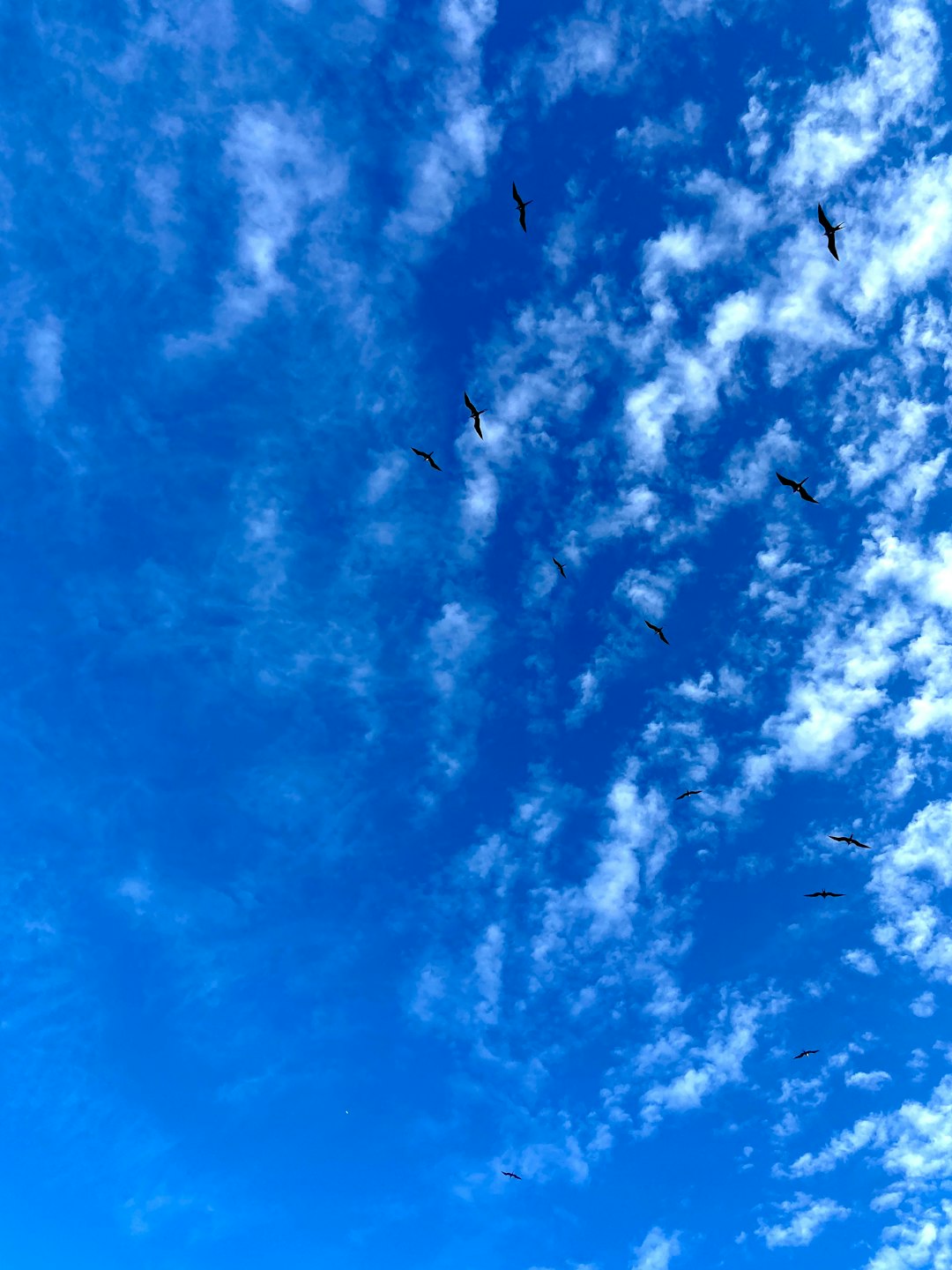
So, what have we learned from our aerial adventure through the world of drone usage? Recreational drones dominate the skies by sheer numbers, with millions of hobbyists buzzing around capturing memories, racing, and just having fun. But the commercial drone sector is the rising star—growing rapidly, packed with innovation, and delivering serious economic impact across industries from agriculture to public safety.
The divide between recreational and commercial drone use isn’t just about who’s flying—it’s about why they’re flying, how they’re flying, and the rules they must follow. Recreational pilots enjoy the freedom of the skies with fewer restrictions, while commercial operators shoulder more responsibility, certification, and advanced technology to safely and effectively get the job done.
If you’re a hobbyist dreaming of turning pro, remember: the journey requires commitment, knowledge, and certification, but it’s absolutely doable. And if you’re a business owner or professional, investing in the right drone and pilot expertise can unlock tremendous value and efficiency.
At Drone Brands™, we’re excited to see where this technology takes us next. Whether you’re chasing sunsets or revolutionizing industries, the drone sky is wide open—and the best is yet to come. Ready to take off? 🚀
Recommended Links for Shopping and Further Exploration
Here are some of the standout drones and resources we mentioned, ready for you to explore and shop:
-
DJI Mini 4 Pro:
Amazon | Walmart | DJI Official Website -
Autel EVO Nano+:
Amazon | Walmart | Autel Official Website -
DJI Avata (FPV Drone):
Amazon | Walmart | DJI Official Website -
DJI Mavic 3 Enterprise:
Amazon | DJI Enterprise Website -
Autel EVO II Dual 640T:
Amazon | Autel Official Website -
Skydio X2:
Skydio Official Website
Recommended Books on Drone Use and Regulations
-
“Drone Pilot’s Handbook” by Adam Juniper — A great starter guide for recreational and commercial pilots alike.
Amazon Link -
“The Drone Pilot’s Guide to FAA Regulations” by Michael D. Smith — Essential reading for understanding the legal landscape.
Amazon Link -
“Commercial Drone Operations: A Practical Guide” by Sarah Johnson — Deep dive into the business side of drones.
Amazon Link
❓ FAQ: Your Burning Questions About Recreational vs. Commercial Drone Use Answered
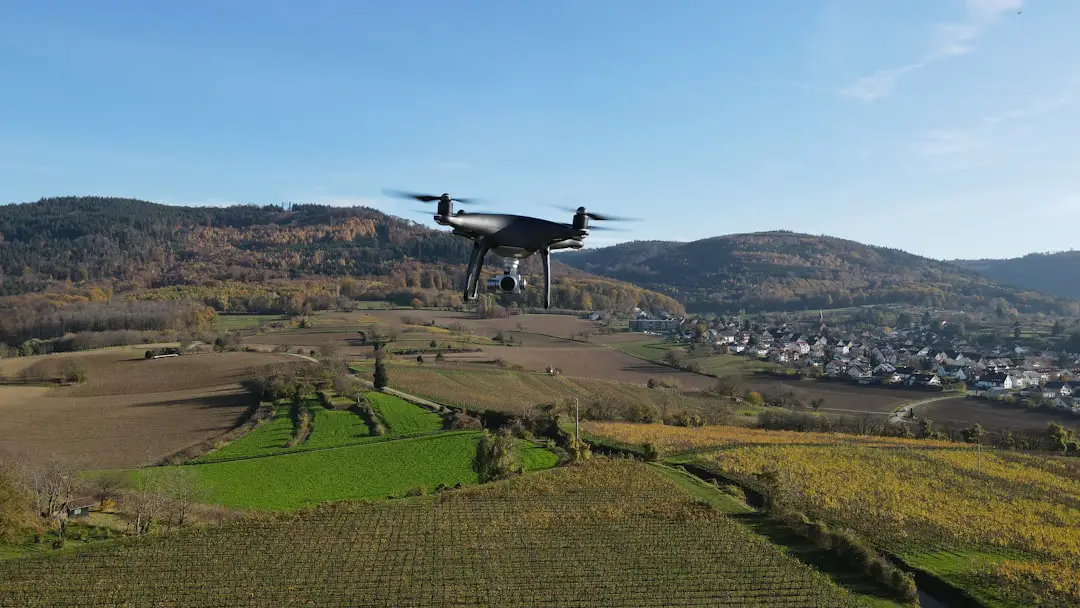
What are the most common recreational uses of drones?
Recreational drone users primarily fly for aerial photography and videography, capturing stunning landscapes, family events, and creative projects. FPV racing and freestyle flying are also popular, offering adrenaline-pumping experiences. Many simply enjoy the thrill of flight and the challenge of piloting. The barrier to entry is low, and the community is vibrant and welcoming.
Read more about “Which Type of Drone Is the Easiest to Fly? Top 6 Picks for 2025 🚁”
How is the commercial drone industry expected to grow in the next 5 years?
The commercial drone industry is projected to grow exponentially, with estimates suggesting a CAGR exceeding 20% globally. This growth is fueled by expanding applications in agriculture, construction, inspection, public safety, and logistics. Advances in autonomous flight, AI, and sensor technology will further accelerate adoption, enabling operations beyond visual line of sight (BVLOS) and opening new markets like urban air mobility.
Read more about “How Many Drones Are Bought Each Year? 🚁 Shocking 2025 Stats Revealed!”
What regulations govern the use of drones for recreational versus commercial purposes?
In the U.S., recreational drone pilots must follow the FAA’s Recreational Flyer Rules, including passing the TRUST test and registering drones over 0.55 lbs. Commercial operators must obtain a Part 107 Remote Pilot Certificate, adhere to stricter operational limits, and comply with additional safety requirements. Regulations differ internationally but generally impose more rigorous standards on commercial use to ensure safety and accountability.
Read more about “What Are the Statistics for Drones? 15 Must-Know Facts (2025) 🚁”
What types of industries are most likely to use drones for commercial purposes?
Industries leading commercial drone adoption include:
- Construction & Real Estate: Site mapping, progress monitoring, marketing visuals.
- Agriculture: Crop health monitoring, precision spraying.
- Public Safety: Search and rescue, firefighting, accident reconstruction.
- Infrastructure Inspection: Bridges, power lines, wind turbines.
- Energy: Solar panel inspection, oil and gas pipeline monitoring.
These sectors benefit from drones’ ability to collect data quickly, safely, and cost-effectively.
Read more about “150+ Drone Business Names Ideas to Elevate Your Brand in 2025 🚁”
How do recreational drone users differ from commercial drone operators in terms of equipment and expertise?
Recreational users typically fly consumer-grade drones focused on ease of use and camera quality, like the DJI Mini series. Commercial operators invest in enterprise-grade drones with specialized payloads (thermal cameras, LiDAR), enhanced GPS accuracy (RTK/PPK), and software for data processing. Commercial pilots must pass certification exams and maintain detailed flight logs, reflecting a higher level of expertise and responsibility.
What are the potential risks and benefits of using drones for commercial purposes?
Benefits:
- Increased efficiency and cost savings.
- Improved safety by reducing human exposure to hazardous environments.
- Enhanced data collection and analytics capabilities.
Risks:
- Regulatory non-compliance can lead to fines.
- Privacy concerns and public perception challenges.
- Technical failures or accidents causing property damage or injury.
Proper training, maintenance, and adherence to regulations mitigate most risks.
Read more about “Can I Fly My Drone at Night? 7 Must-Know Tips for 2025 🌙”
Can recreational drone users transition to commercial drone operations, and what steps are involved?
Absolutely! Transitioning involves:
- Studying for and passing the FAA Part 107 Remote Pilot Certificate exam.
- Registering your drone for commercial use.
- Learning commercial operational rules, including flight restrictions and waivers.
- Investing in or upgrading to drones with commercial capabilities if needed.
- Maintaining detailed flight logs and staying updated on regulations.
Many hobbyists successfully make this leap, turning passion into profession.
🔗 Reference Links and Data Sources
For verification and further exploration, here are the authoritative sources we used:
-
Federal Aviation Administration (FAA) – UAS Data and Regulations
https://www.faa.gov/airports/resources/data_stats
https://www.faa.gov/uas/commercial_operators -
SWL Attorneys – Drone Law: Recreational vs. Commercial Use
https://swlattorneys.com/drone-law-understanding-recreational-and-commercial-drone-use/ -
Drone Industry Insights (Droneii) – Market Reports
https://droneii.com/ -
European Union Aviation Safety Agency (EASA) – Civil Drones
https://www.easa.europa.eu/en/domains/civil-drones -
DJI Official Website
https://www.dji.com/ -
Autel Robotics Official Website
https://www.autelrobotics.com/ -
Skydio Official Website
https://www.skydio.com/ -
Wikipedia – Unmanned Aerial Vehicle
https://en.wikipedia.org/wiki/Unmanned_aerial_vehicle
Thanks for flying with Drone Brands™ today! Ready to take your drone journey to new heights? Keep exploring, keep learning, and keep soaring! 🛸✨
